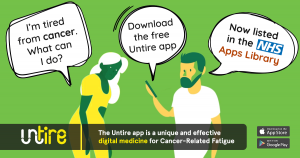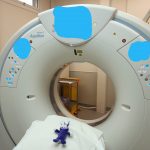Getting enough sleep is important for everyone. When you’re suffering with fatigue as a result of your brain tumour, it is even more so. Unfortunately, knowing this can cause you to put pressure on yourself to sleep well, and this can mean your sleep is impacted even more! So, we have compiled some tips and advice to help you get a good night’s sleep.
With these tips, and using our fatigue resource, you can own your brain tumour fatigue.
How to sleep well

Did you know that the biggest impact on our ability to sleep well is alcohol, at 13.8%? This is followed closely by stress (12%) and caffeine (11.7%). This isn’t scientific research, but is the result of a survey run by The Times. But it makes sense. When we’re stressed we can sometimes use alcohol to help us relax and caffeine to give us a boost when we’re feeling less than ticketyboo.
Also – we actually sleep more than we think we do. We may not be as sleep deprived as we think we are – even during a restless night where you feel you haven’t slept at all, you will usually get a few hours. OK – it might not have been solid, transformative sleep. But it was sleep, including deep sleep.
So what are the small 1% changes you can make to help you sleep better?
Well, if you haven’t already, download our fatigue resource (or email hello@brainstrust.org.uk to ask for a hard copy) and have a good read of pages 16 – 34. There are some tiny actions outlined here that you could adopt that together would make a significance difference.
Other things that can improve the length and quality of your sleep include:
- Exercise. Perhaps counterintuitively, regular exercise can help you to feel less tired. Where you can, try and avoid exercise at night
- Reducing screen time. Avoiding phones and tablets for an at least an hour before bed can help, because the light exposure delays the release of melatonin.
- Winding down. Dimming lighting, and activities such as having a warm (but not hot) bath, getting cozy and gentle relaxation like mindful breathing can all help to prepare you for sleep.
- Having your evening meal early. Try to eat your dinner about 3 to 4 hours before bed. This impacts our body’s temperature – you’ll lose one degree so you are more able to sleep.
Sleep quiz – are you a lark or an owl?
Finding this out by taking part in this simple quiz can mean that you can adapt some of your daily activities to suit your own body clock:
A ‘digital’ medicine – Untire

Untire is an app which helps you understand cancer fatigue, gives you exercises to reduce stress and tips to improve your mood and energy. The app was developed by a team of psychologists and psycho-oncology researchers. It’s mission? To help as many people living with cancer as possible. Untire is free to download and is for everyone. You can find more information about the app on the website www.untire.me, watch this little video, or find out more about the background and the app in this video.
The good news? The Untire app has successfully passed the rigorous assessment with NHS digital and is now published on the NHS Apps Library.










